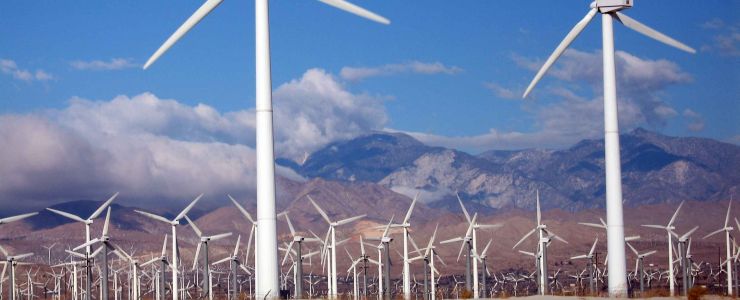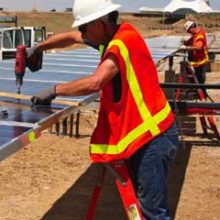The manuscript, “Uneven Local Benefits of Renewable Energy in the U.S. West: Property Tax Policy Effects,” provides revenue estimates and policy analysis to explain how and why revenue impacts vary across the rural West.
The goal of this research is to better inform project developers, policymakers, and local and state officials while encouraging discussion of policy approaches that prioritize local economic benefits in attracting and supporting new electricity infrastructure.
Background and Findings
Previous studies on the economic impact of renewable development have focused on local inputs such as capital, materials, and labor used in each project. Generally speaking, however, opportunities for local investment and local supply of labor and material in large-scale renewable energy developments are limited.
This paper builds on recent research that confirms that lease payments to private land owners and new tax revenue also figure prominently in the anticipated local benefits of large capital-intensive projects such as electric facilities.
In many rural counties in the West renewable energy development is more likely to end up on public rather than private land and evaluating the link between tax incentives and potential local revenue opportunities is a key building block for assessing renewable energy economic impacts.
For generation facilities, property tax benefits ranged from $32,000 to close to $850,000 for the hypothetical Year 1 revenue. For transmission investments, the range is from $112,000 to $871,000. When depreciation enters into calculations of taxable value, the drop in revenue collections can be very steep, posing risk and challenges, especially in taxing jurisdictions where the new revenue is large relative to existing collections.
The scale of opportunity from new utility investments is substantial for some rural counties, especially those with small tax bases and high tax rates. In other rural counties, the opportunity is negligible.
Performance Index
Our study found that the level of property taxes is highly uneven and bears little relationship to the economic challenges and opportunities of counties. To further our research, we created an economic performance index which uses five measures to categorize western counties based on economic performance and potential.
The performance index shows that many, although not all, rural counties with high levels of renewable energy resources are also counties that have few other economic opportunities.
The index is portable across a variety of policy areas that can benefit from a simplified approach to differentiating the economic well-being of western counties. For example, Headwaters Economics recently utilized it as part of a proposal to reform the federal Payments in Lieu of Taxes (PILT) program.
The index’s five variables—household income, earnings per job, families below the poverty level, education, and access to markets—are updated annually and published by the U.S. Census Bureau and U.S. Bureau of Economic Analysis.
Citation
Both papers recently were published in Western Economics Forum, a Journal of the Western Agricultural Economics Association, Spring 2014: Volume 13, Number 1.




